Related Content
Content
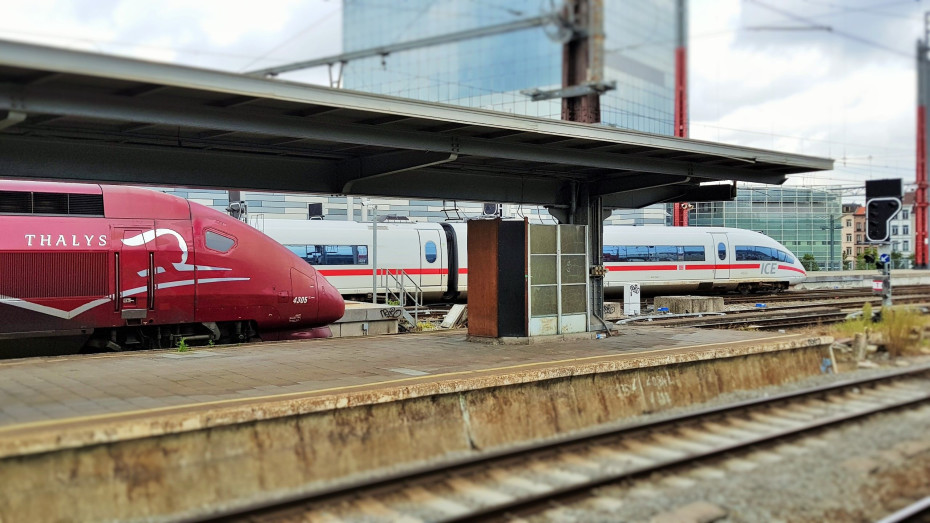
Interrail and Eurail: 12 Itinerary Planning Tips and Ideas
Suggestions for how to plan your train journeys around Europe with Eurail or InterRail passes, so you can make most of your fabulous trip
Share
So you're thinking of heading off on an Interrail or Eurail adventure around Europe by train? You want to follow your own itinerary, or one of our suggestions and not that set by a holiday company.
That romantic notion of spontaneously deciding where you want to go next after you have arrived somewhere, isn’t over, but some planning of your trip will ultimate save you time, money and stress.
Hopefully these tips and suggestions will be a good starting point and you can either use the content menu to jump direct to the nuggets of info most pertinent to your travels, OR relax with a coffee etc and browse through all the advice.
The majority of these tips and suggestions only became apparent having travelled more than 30,000 kilometers around Europe with a rail pass, so you can trust this advice to help you have the trip of a lifetime!
Choosing Your Destinations:
These three suggestions aren't so much to do with where you should go, you'll have your own must-see lists, but they can help make the managing of that wish list easier.
1. Use A Printed Map:
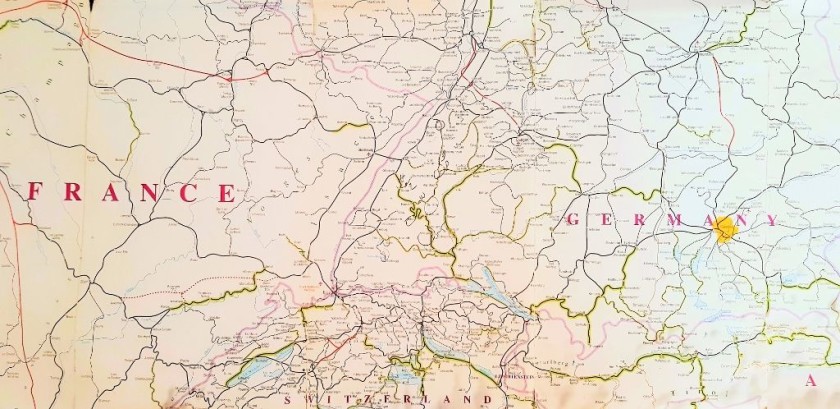
It may seem a tad 'old-school' but opening up a printed map of Europe, is always our preferred starting point for planning a European rail adventure - it's still the best means of getting a sense of what's where in one hit.
The European Rail Timetable publishes the definitive railway map of Europe and what makes it unique is that it shows the scenic routes and the high speed lines.
It also doesn’t plot the distances between locations as straight lines; which is useful as planes follow straight lines, but trains don’t.
Getting your hands on an old map is fine, as the cities and other locations on your wish-list haven't upped and moved.
It can be tempting to plan a trip which visits your must-see locations in order of preference, partially because Europe doesn't look that big in comparison to other continents.
But to make the most of a rail pass adventure it's more than likely that you'll want to minimise the time you'll be spending on trains, while maximising the time you'll have in your chosen locations, so a map can help with planning the most logical route.
Something else that can help with that are our suggested rail pass itineraries - even if you don't want to follow them exactly, they'll give you an idea of how to spend as little time as possible on the trains.
2. Mix up the type of destination:
Stringing together a series of consecutive big city breaks can be exhausting, so spending time in destinations based around relaxation, such as beach and lake resorts can enhance a rail pass itinerary in more ways than one.
Leaving the must do list blank on a couple of days, can also provide the energy to complete the wish-list in your final series of destinations.
Trains travelling between big cities also call at these locations which are ideal for winding down; Albenga, Baden-Baden, Badgastein, Beziers, Bamberg, Heidelberg, Klagenfurt (for the Worthersee), Lesce-Bled, Lindau, Lugano, Monterosso (for the Cinque Terre) and Stresa.
Some areas famed for the natural wonder, which also benefit from comparatively easy train connections, include The Black Forest, The French Alps, The Swiss Alps, Lake Balaton, Liguria, The Cote D’Azur and Tuscany.
Other ideas for taking the maximum pleasure and minimum stress from your trip, once you have embarked on your adventures, are available HERE.
Or you can use the Concierge Service and it will plan your ultimate itinerary.
3. Minimise the number of overnight locations:
There’s no getting away from the fact that the key negative of following your own itinerary, when exploring Europe by train, is the need to take responsibility for how to make the transfer between the stations and your overnight accommodation.
But you don’t have to move on to some distant location every other night, in order to extract value for money from a rail pass.
Making a day trip by train that involves a two hour (+) journey each way, probably isn’t something you’d probably usually consider, but with a rail pass they can be a good idea for multiple reasons:
- You’ll be travelling far enough that day for your pass to be worthwhile,
- You’ll arrive in a city centre
- Take a late evening train on your return trip and you’ll have a full day to explore your chosen location.
- You won’t need to have your luggage with you on those trains.
And you can up the ante by setting off on multi-destination day trips, which loop back to where you are staying.
For example, head off from Munich to have brunch in Innsbruck, have an early dinner in Salzburg and then head back to Munich late in the evening.
This multi-destination per day approach can be a particularly good option if you want to explore smaller countries such as Switzerland...
....Belgium or The Netherlands where you can just hop and off the trains.
Cities that are particularly good bases for multiple day trips by train, include - Basel, Bern, Bologna, Brussels, Florence, Gent, Glasgow, Innsbruck, Leeds, Lyon, Manchester, Marseille, Milan, Munich, Paris, Reading, Rotterdam, Salzburg, Verona and Zurich.
Though if a day trip destination is less than 90 mins from a city by local or regional trains, then using a rail pass for that type of journey is less likely to be value for money.
If you'll have the type of Eurail or Interrail pass that's valid for a set number of travel days, the better option may be to book last minute tickets at the station for those types of journey - saving your rail pass travel dates for when you will be going long distance.
Planning Your Journeys:
Don't panic, you won't need to keep all of these things in mind, when deciding which trains to take on your adventure.
4. Reduce the luggage stress:
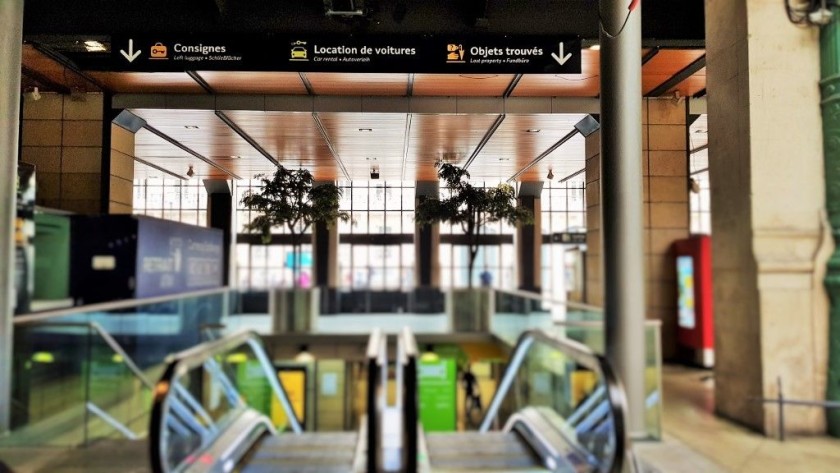
The other plus of spending an extended period of time in one location, is you’ll also be reducing the number of occasions on which you'll have to find somewhere to stow your bags on the train and then carry them off to where you'll be spending the night.
But another means of reducing the stress of managing your luggage is to see if there any opportunities on your chosen route, to leave some of your bags in a left-luggage facility; and then loop back later on in your itinerary, to collect them, when on route to another destination.
Split your luggage into a medium sized bag on wheels or back-pack and a smaller hand luggage sized bag or pack.
You'd do this when taking a flight, but being able to only travel with one large bag on trains may not be such an advantage over flying, because the bigger the bag the more awkward it will be to stow it on the train.
However, if you divide your luggage, you can work out where you can leave your main, heavier bag behind, so that you can then travel lighter on some of your trip.
You don't need to spend the night in the same location as your bags, but it can be worth adjusting an itinerary, so that later on, you can then collect a bag or two that you won't have had to bother about for a few days.
Stations that you're comparatively likely to be passing through more than once include - Barcelona Sants, Basel SBB, Frankfurt (Main) Hbf, Innsbruck Hbf, Milano Centrale, Salzburg hbf, Verona Porta Nuova and Zurich HB.
As to what you need to pack and the type of luggage you should use, TripSavvy has some great advice here
5. Have a reservation strategy:
First you need to be aware of how seat reservations could impact your trip, because European DAY train services fall into one of three categories.
(1) Those with mandatory reservations - ticket purchasers have seats assigned as a complimentary booking benefit, but rail pass users need to pay a rail pass reservation fee prior to boarding.
(2) Those with optional reservations - both ticket purchasers and rail pass users can choose to pay a reservation fee, so that they have an assigned seat for their journey.
Meaning that rail pass users don't have to incur any additional charges on these trains because you can opt not to reserve and then search for available seats when boarding.
(3) Those on which reservations aren't available
And reservations are always required for overnight trains, regardless of which type of accommodation you wish to travel by.
Rail passes don't cover the comparatively expensive reservation fees for travelling in a bed in a sleeping cabin, or in a bunk in a couchette.
So when planning your itinerary, be aware of whether you will have to, or want to make reservations for your journeys.
These reservations fees can tip the balance over whether booking tickets is a a better option than using a rail pass.
And if you want to avoid the mandatory charges, or paying any reservation fees at all, it's best to have an idea of your alternative journey options before you commence your trip.
Although try not book multiple reservations before you set off, because if you do, you'll then be committed to making those specific journeys, which will reduce your opportunities to be spontaneous.
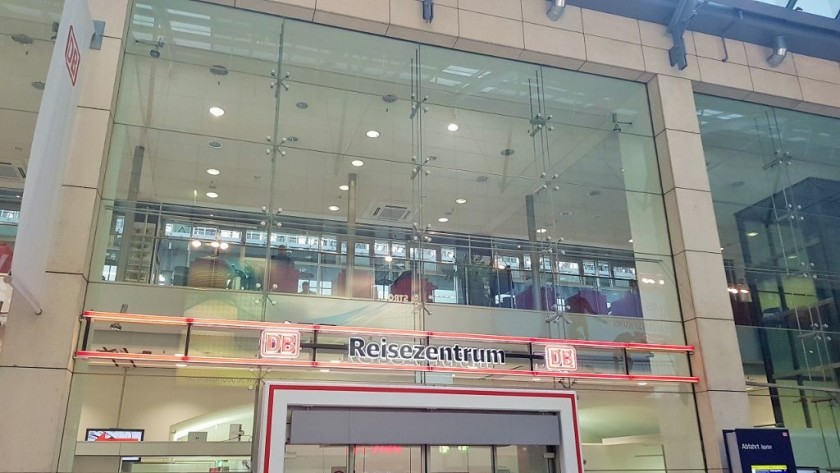
There will be multiple opportunities to book reservations while on your trip, without paying booking fees or going online.
At Reisezentrum travel desks in the haupthanhofs (main stations) in Germany, you can arrange reservations for most European day and night trains.
In Italy you can book reservations for domestic and international journeys at Trenitalia ticket offices.
You also won't be charged booking fees if you arrange reservations at stations in Austria, Great Britain*, Denmark, France, Ireland, Spain, Norway, Czechia, Hungary, Poland and other countries in eastern Europe.
Though if you won't be taking a frequent daytime service it's a good idea to book reservations when you first arrive at a station; if you leave it until you're back at the station just prior to boarding, your first choice of departure may be sold out.
*In Britain some reservations often need to be made a minimum of 4 hours prior to departure; so it's best to book them when you first arrive at a station.
Or you can try jumping on the Rail Europe website / app while you're in transit.
I've booked a reservation on the next departure to Venezia / Venice, while I was stood waiting on the concourse at Milano Centrale station.
Managing journeys with mandatory reservations:
Booking SOME of these before you set off on your trip can be a time and stress-saver.
Reservations rarely sell out days or more in advance, but it isn't unknown, particularly on:
(1) French TGV trains over summer weekends; you can often save money by booking reservations for any TGV service in advance - and on these Intercités services.
(2) Spanish train routes on which the service isn’t particularly frequent and on the RENFE-SNCF high speed trains in either direction when travelling between France and Spain
(3) Trains to and from Sweden in the summer.
(4) Overnight trains to and from Italy, particularly in the summer.
(5) If you want to travel in a specific type of accommodation on an overnight train such as single berth sleeping cabin, or booking an entire couchette berth, it's best to book these at least couple of weeks ahead, no matter which overnight train service you'll be taking.
(5) Eurostar and Thalys trains, particularly on Fridays and Sundays.
(6) Trains between Rome and destinations south of Napoli, particularly in the summer.
How you can book any mandatory reservation in advance is explained HERE
Although it’s best to take the hint and avoid using a rail pass on the trains with particularly expensive fees such as the TGV France-Italy and Lyria services.
On these trains, the cheapest discounted tickets can cost less than the rail pass reservation fees; once you have also factored in the cost per day of using the rail pass.
But there’s no need avoid these journeys/routes completely, after all a train journey between Paris and Italy or Switzerland, is likely to be on the must do list of many itineraries.
If you opt for the standard types of pass, the trick is to put these journeys with high reservation fees at the beginning or end of an itinerary and then book separate tickets for them a minimum of couple of weeks in advance.
- Or opt for the type of pass with a set number of travel days, but don't use one of the pass days to travel on these trains.
- Or you can now book a Plus Pass and use included 'credits' which cover these more expensive trains.
- Or avoid the fees, by following these alternative routes.
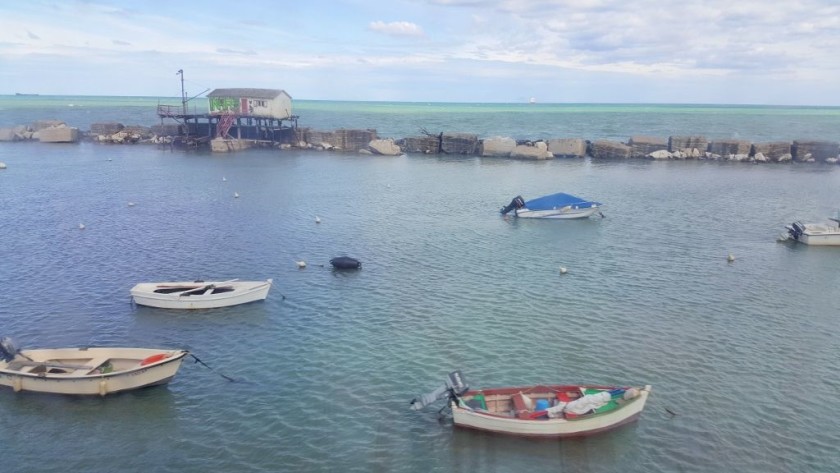
Suggestions for when to make optional reservations:
Reducing the number of trips on which you should ideally reserve a seat will make pursuing a multi-destination itinerary more carefree; particularly because a negative of booking a seat, is a commitment to travel on a specific train departure.
On scenic routes you can also choose a seat(s) on the side of the train, which has the best views.
The rule that ShowMeTheJourney follows, is to only make optional reservations, if TWO or more of these criteria apply:
- the journey is longer than 90 minutes
- the frequency of train service is 1 x train every OTHER hour, or less
- will be joining a train at an intermediate station
- will be boarding at any station between:
08:30 and 10:30 on Mon– Sat
16:30 and 18:30 on Mon- Thurs
12:30 and 19:30 on Friday
08:00 and 12:00 on summer Saturdays
14:30 and 19:30 on Sundays
6. Consider your international journeys:
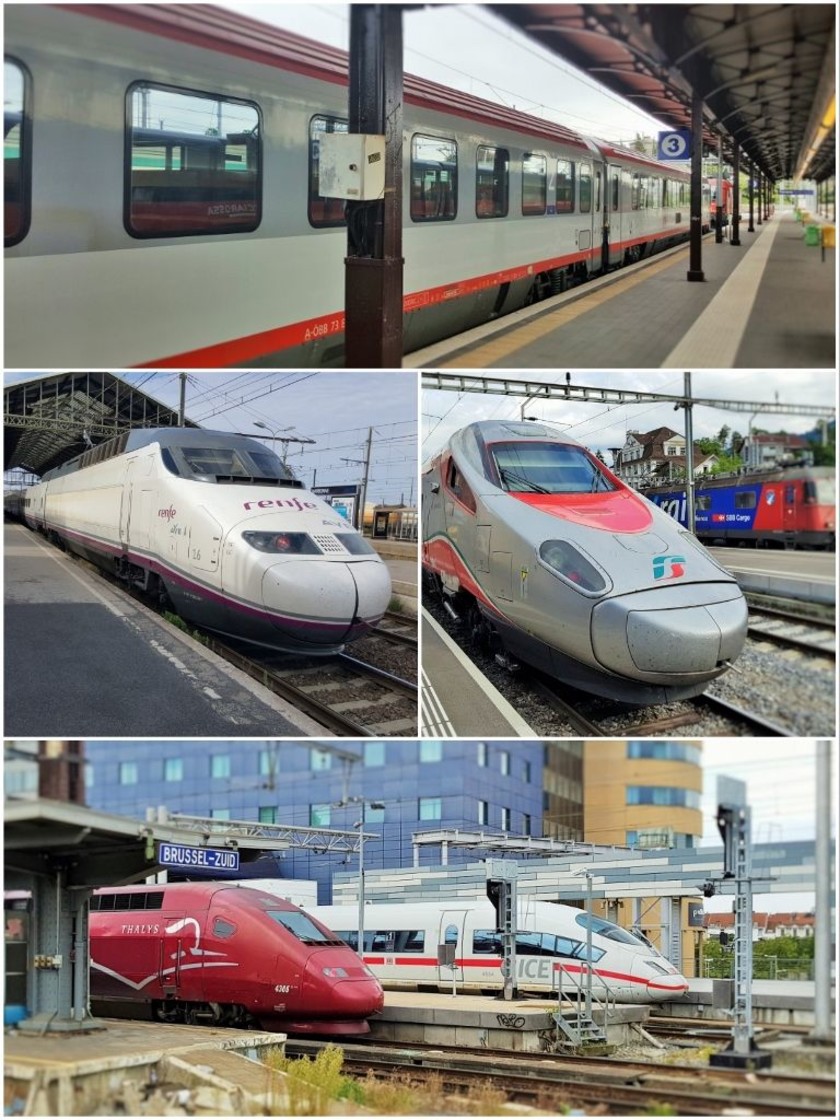
It's worth paying special attention to your international journeys.
Only a tiny percentage of European daytime express trains are international, some routes only have 1 x train per day.
Also a large percentage of the international daytime services have mandatory reservations - the only high speed international services which don't are the ICE trains from and to Germany; though now reservations are mandatory from June 1st to Sep 1st when using these trains to travel to and from Austriam Belgium and The Netherlands.
On some routes the only direct train service option is to take an overnight train.
If you want to use an Interrail or Eurail pass and avoid these rail pass reservation fees, it's worth planning an international journey with care because you'll need to change trains, normally more than once and the cross border local trains often operate to sparse timetables.
The comparatively fairly frequent cross-border services that can be useful money-savers for rail pass users are:
- Basel ↔ Mulhouse and Strasbourg
- Chiasso ↔ Bellinzona
- Geneve ↔ Bellegarde and Lyon
- Innsbruck ↔ Brennero
- Nice ↔ Ventimiglia
- Port Bou ↔ Cerbere
- Strasbourg ↔ Offenburg
ShowMeTheJourney has also compiled summaries of all the international train services from and to these countries:
7. Be smart about the overnight trains:
At face value taking a night train can seem a good option for multiple reasons, more time at a destination, less overnight room rates to pay for; and now taking a night train only uses one up one day of a rail pass travel day allocation, instead of two.
However, even if you opt for a couchette or sleeping cabin, taking too many night trains on one itinerary can be exhausting if you’re not an early riser.
It’s not unusual for night trains to arrive in a city before 07:30, perfect if you were heading to a 09:00 business meeting, but perhaps not so ideal if a day’s sightseeing is on the agenda, or if your accommodation check-in time is after midday.
Also pack an eye mask, ear plugs and an extra pillow, because without them you will be fortunate indeed to get more than five or six hours sleep per journey.
But taking the night train can be a particularly good idea when it provides the only DIRECT service between two cities, as is the case on these routes:
- Munchen/Munich ↔ Firenze/Florence - Roma by Nightjet
- Zurich ↔ Ljubljana – Zagreb by EuroNight
- Zurich ↔ Berlin by Nightjet
- Zurich ↔ Prague
- Wien/Vienna - Budapest ↔ Kiev
- Wien/Vienna ↔ Buccuresti/Bucharest by EuroNight
- Sofia ↔ Istanbul
Certain nights of the week only / Seasonal services:
- Beograd/Belgrade ↔ Ljubljana
- Beograd/Belgrade ↔ Thessaloniki
- Buccuresti/Bucharest ↔ Istanbul
- Buccuresti/Bucharest ↔ Sofia
- Buccuresti/Bucharest – Sofia ↔ Thessaloniki
Opting for the seats on the overnight trains:
You will need to pay a reservation fee, normally around €5 - €10, for a seat on most overnight trains.
Although, unless you regularly drift off to sleep on daytime trains, paying the much cheaper reservation fees for these seats on multiple journeys can be a false economy.
If you’re lucky the seats on the overnight train will be in compartments and you can pull the seats flat to make a bed.
But there will be 6 seats in the compartment and only 3 people can fit on the bed, so on busy trains this won’t be an option.
8. Pay Special Attention To Your Longer Journeys which involve connections:
Being willing to make connections between trains can enhance an itinerary, you can increase your opportunities to take scenic journeys, or to visit must-see locations off the beaten track.
And being able to pick and choose how you make the connections between trains is a big tick in the box for using rail passes instead of tickets.
Ticket agents tend to assume that travellers will want to reach their final destinations in the fastest possible time, but because the connections between trains they package together aren't guaranteed, that approach can result in a stressful trip - for those that have opted to purchase tickets.
However, keeping these FOUR tips front of mind should help ensure that your more complicated journeys with a rail pass are comparatively stress free.
(1) Check whether a DIRECT day or night train will in fact be available; don’t assume that it won’t be an option.
(2) Try to avoid being dependent on making the final connection of the day that will get to your destination, it probably won't wait too long for a delayed preceding train to arrive, before it sets off.
If you have no choice except to connect into the only or final train of the day, taking the PRECEDING train from your starting point to what a route planner suggests, is highly recommended.
(3) Maximise the connecting time you’ll have between trains at large stations, spend time in a café or bar between trains, or stock up on travel essentials, or leave your bags in the left luggage and head off for a couple hours or more of exploring.
Stations at which you'll be likely to be changing trains, which also happen to have great city centre locations include: Edinburgh Waverley; Firenze S.M. Novella, Hamburg Hbf, Koln Hbf, Kobenhavn H, Leeds, Lille Flandres, Luzern,and Zurich HB.
When making connections at large stations anywhere but Belgium, Switzerland or the Netherlands, our golden rule is to allow at least 30 mins to make the transfer.
That 30 minutes is split between a 15-20 mins contingency for the train arriving late and the time required to transfer to your next train.
(4) If you are connecting into a train service, which requires a mandatory reservation, then extending the connecting time between trains is definitely a good idea.
In the event of a preceding train being delayed, you can’t just hop on to the next departure by the same type of train; you'll have to stop by a travel desk to have any reservations re-issued, and because you will be travelling with a rail pass and not a ticket, you may have to pay the reservation fee again.
The connections between trains, which can be found on journey planners, are usually NOT guaranteed.
In our experience you can expect at least 10% of long distance European trains to arrive more than 15 mins late and 3% to be more than 30 mins late.
EC, ICE, TGV, Frecce, Snabbtag trains and the Intercity trains in France, Germany, Italy and The UK seem to be particularly susceptible to lateness; the further a train travels, the greater the opportunity for delays to occur.
9. Try to avoid going long distances at weekends:
Work to maintain and improve railway lines tends to take place at weekends, particularly on Sundays.
When this work is occurring, trains on mainland Europe tend to be diverted from their usual route and as a result can skip stations that they usually call at.
Having to get a bus to complete a journey is rare, but you may need to make additional connections, which aren't required when the service is operating normally.
10. Consider the time of day at which you will be travelling:
These tips particularly apply if you are trying to avoid paying for optional reservations.
- Avoid travelling long distance on Fridays and Sundays after midday and departing on summer Saturdays between 09:00 and 12:00.
- Avoid travelling at business hours 07:00 – 10:00 and 16:00 – 18:00 on Monday to Friday.
Though in Austria, Belgium, Czech Republic, Switzerland and The Netherlands, if you avoid heading INTO cities in rush hours, you can find seats on virtually any train; this also applies in France if you take the TER trains.
11. Working out how to travel (pass or tickets):
By planning at least some of your journeys (the Concierge Service can help with this), you'll now have a better idea of whether booking tickets or using rail passes will be your best option, because in order to make an informed choice, ShowMeTheJourney recommends having a good idea of:
- How far apart from each other, the destinations you wish to visit are located.
- How many long-distance (5 hours +) end-to-end daytime journeys you will be taking?
- How many of those journeys will be on trains on which ticket-holders have complimentary seat reservations?
- How many night trains you will be taking?
Then with those things in mind you can apply these TWO key criteria:
(1) A 'Global' multi country rail pass is LESS likely to save you money if one or more of these apply to your trip
because you:
- will be taking less than around six long distance (5 hours +) train journeys,
- are happy to book discounted tickets months in advance and then be committed to taking the trains you are then booked on to,
- will be mainly travelling in eastern Europe,
- will be mainly travelling on trains on which the mandatory reservation fee for rail pass users is more than €10 (only likely to be a factor if your trip pivots around France),
- will be making most of your long distance journeys by night trains.
(2) A 'Global' multi country rail pass is MORE likely to save you money if one or more of these apply to your trip,
because you:
- want to travel 1st class,
- want to travel on the Swiss Mountain Railways,
- will be travelling for 8 days or more,
- will be travelling between June – September, or either side of Christmas, or during the Easter holiday,
- will be planning a trip less than a month ahead,
- want take advantage of the discounts etc that are available to rail pass users.
Note the very deliberate use of the word ‘likely, because so many variables need to factored into the ‘will a rail pass save me money’ equation, there are no absolutes.
In SMTJ's experience, if you will be travelling for 10 days or less, the only means of being certain whether a rail pass will be money saver, is to look up the prices of the journeys you wish to take, or you can ask the Concierge Service to do this for you.
The fee you will pay for using the service is likely to be less than the money you will save by opting for a pass or tickets (or vice versa).
Though if you are planning on taking more than 10 long-distance journeys, it’s almost certain that a rail pass will be a money saver.
12. Ideas for booking your accommodation:
Having stayed in more than 50 locations when on a rail pass adventure, there's so many tips to share about this that it's been spun off into a separate GUIDE.
But the top 5 nuggets of advice are:
(1) Book so that you cancel without incurring any charges, once your on your itinerary, it can be tempting to head off in an entirely unexpected direction.
(2) Book any train reservations etc before you book your accommodation.
(3) Also if you'll be travelling long distance to a destination, double-check that the train will be operating as normal on your travel date; what both of these two tips are echoing is that it's best to be sure of your train travel, before booking your accommodation.
(4) A plus of using a rail pass is that you don't have to stay in a city centre, because your pass will be valid on local trains (but not the metros).
So you can easily access accommodation in a suburb, which will likely be a much cheaper option.
(5) You don't have to stay in the big cities on your must-see list.
It can be much cheaper to check which nearby locations the trains you will be travelling by will call at; and then stay in those instead.
The other rail pass guides:
Relevant train travel guides:

Simon Harper
I wanted to share my passion for train travel and explain how anyone can take the fantastic journeys I have taken.

This is one of more than 100 train travel guides available on ShowMeTheJourney, which will make it easier to take the train journeys you want or need to make. As always, all images were captured on trips taken by ShowMeTheJourney.
This second version of ShowMeTheJourney is exciting and new, so we are genuinely thrilled that you are here and reading this, but we also need your help.
We’re striving not to let anything get in the way of providing the most useful service possible, hence a facility has been set up with DonorBox which can be used to support the running costs and make improvements.
Instead of advertising or paywalls, your financial support will make a positive difference to delivering an enhanced service, as there’s a lot of ideas which we want to make happen.
So if you have found the info provided here to be useful, please consider saying thank you.








